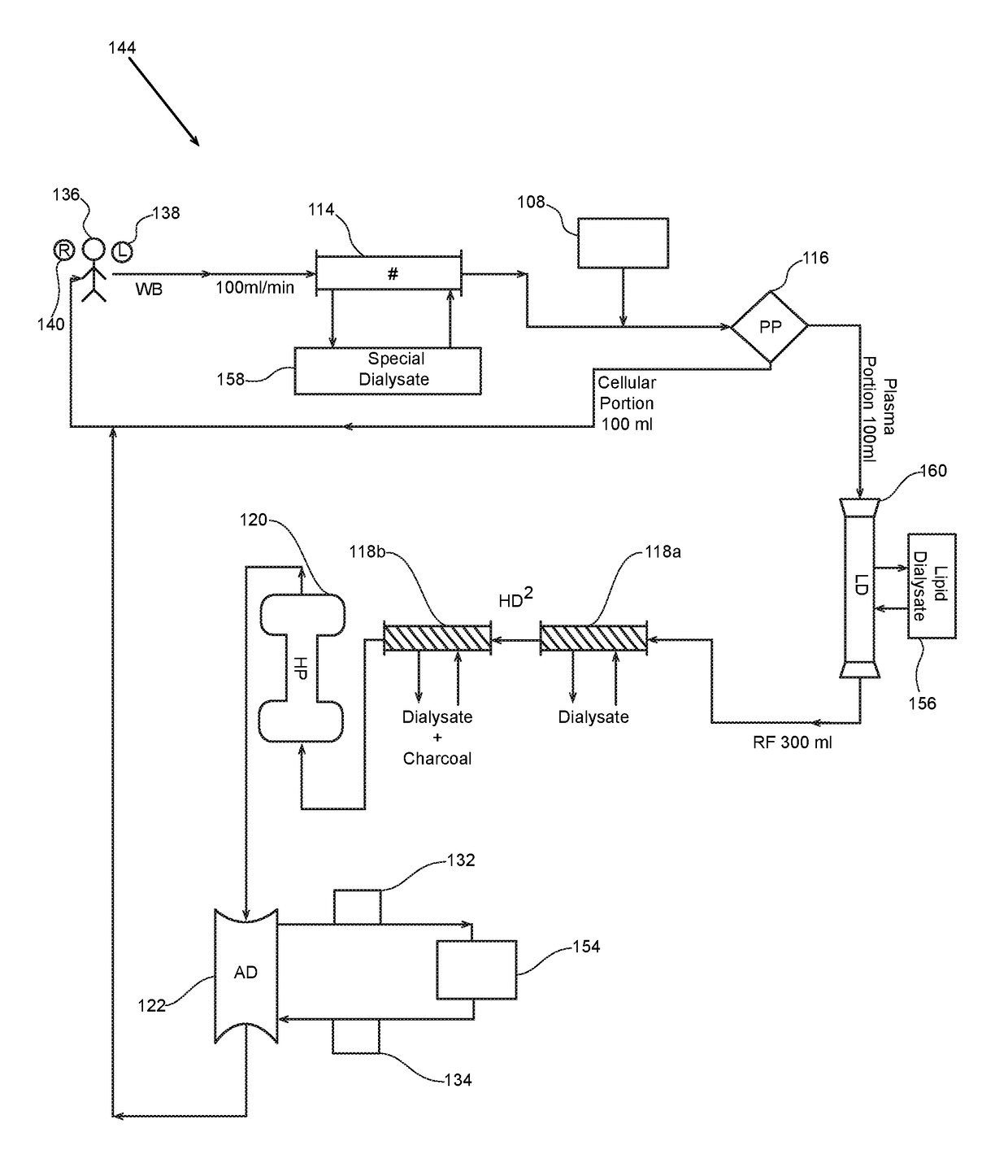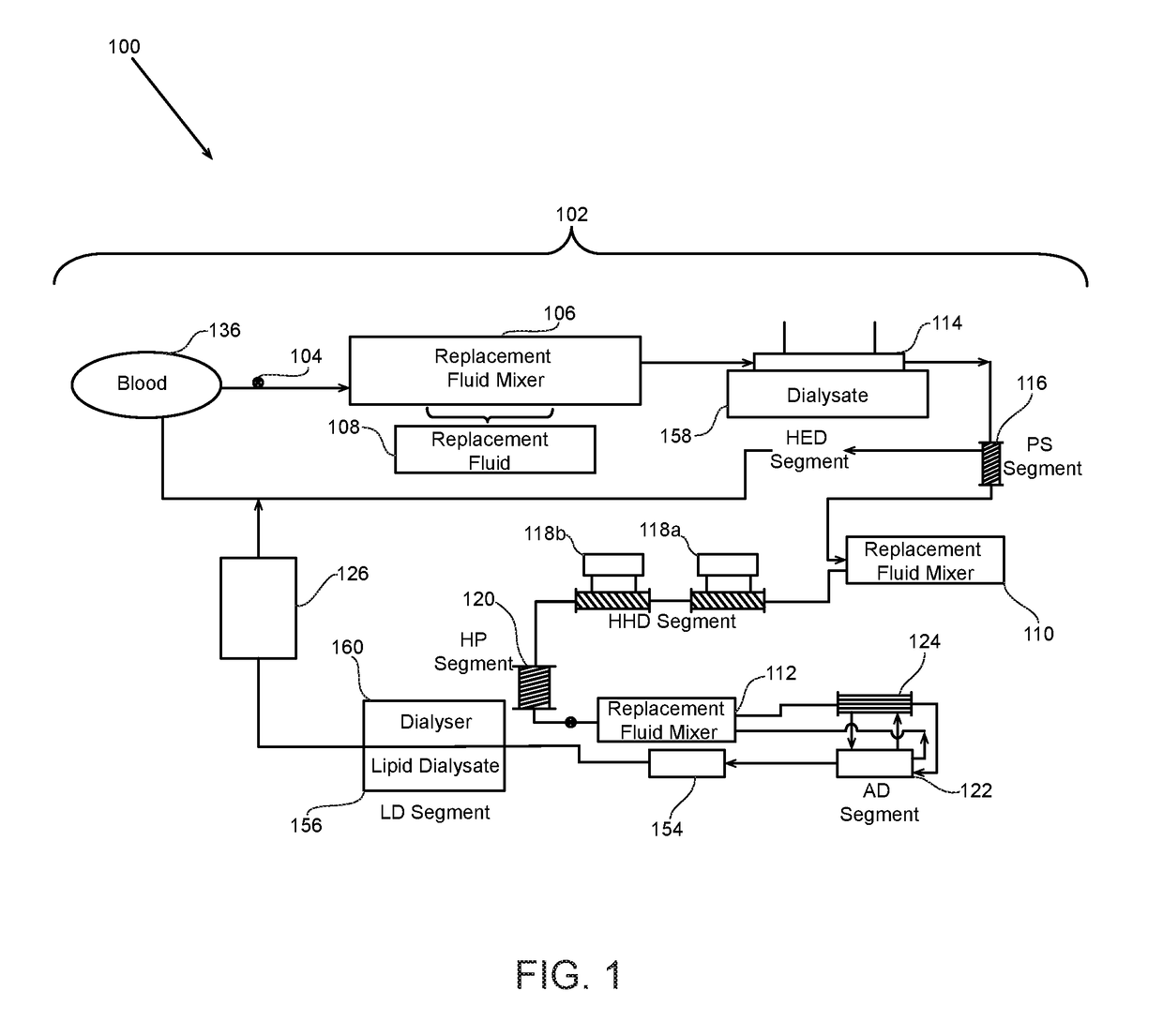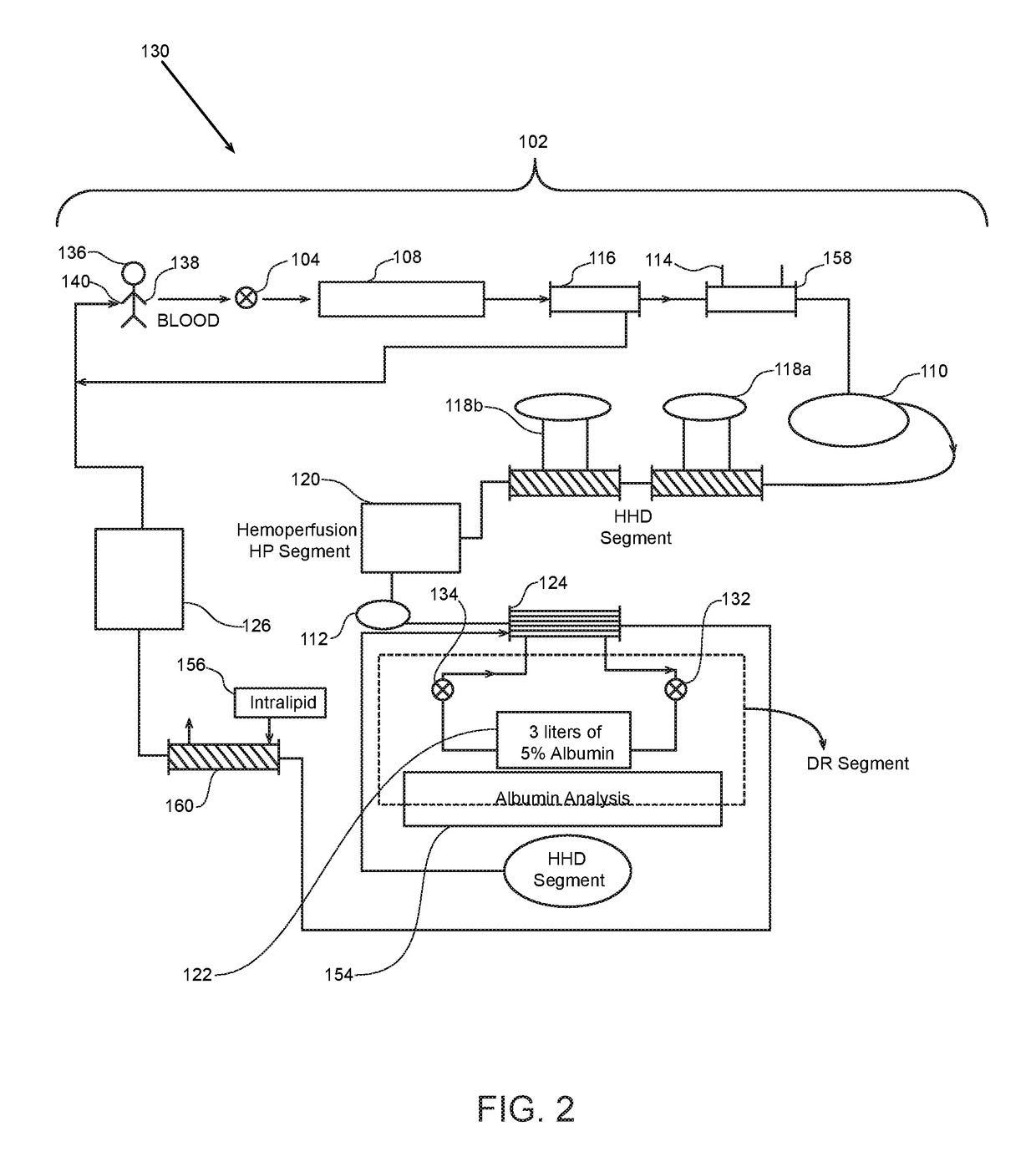Combination Kidney and Liver Dialysis System and Method
a dialysis system and kidney technology, applied in the field of conjugated kidney and liver dialysis system and method, can solve the problems of limited treatment options for liver disease, unable to replace 10% of renal function, and unable to meet the needs of patients with liver disease, so as to avoid ventilator-associated complications and avoid oxygen toxicity to the lungs
- Summary
- Abstract
- Description
- Claims
- Application Information
AI Technical Summary
Benefits of technology
Problems solved by technology
Method used
Image
Examples
third embodiment
[0092]It is significant to note that the components of the system 100 may be arranged in myriad combinations and sequences. The components are easily attached, detached, and rearranged in the closed loop system of the present invention. For example, FIG. 3 illustrates a block diagram of a combination kidney and liver dialysis system 142. In this embodiment, the first replacement fluid 108 is a composed of a high ionic solution. The lipid dialyzer is also optional in the system 142.
[0093]In another example, FIG. 4 illustrates a fourth embodiment of a combination kidney and liver dialysis system 144. In this embodiment, the lipid dialyzer positions before the hemodiafiltration filters. FIG. 5 illustrates a block diagram of a fifth embodiment of an exemplary combination kidney and liver dialysis system 146. In this embodiment, the concentration of the first replacement fluid 108 maybe increased to higher volume of a high ionic solution.
[0094]In yet further alternative embodiments, FIG....
eighth embodiment
[0095]FIG. 8 illustrates a block diagram of an exemplary combination kidney and liver dialysis system 152. In this embodiment, the hemoperfusion membrane 120 positions between the lipid dialyzer 160 and the albumin dialyzer 122. In any case, the general functions of separating the blood components, adding large volumes of replacement fluids, passing the plasma portion of the blood through various semi-permeable membranes, and utilizing lipid and albumin dialyzers 160, 122 remains substantially the same.
[0096]Thus, the device 102 utilizes various semi-permeable membranes, absorbers and dialyzers 122, 160 arranged in multiple unique and novel sequences to increase efficiency of kidney dialysis as well as liver toxin removal while also oxygenating the blood: a) Reducing recirculation through the use of two oppositely disposed access points on the body 136, each access point located in a different limb, to decrease recirculation entirely; b) Reducing dead-space, after plasmapheresis mos...
ninth embodiment
[0098]FIG. 9 illustrates a block diagram of an exemplary combination kidney and liver dialysis system 162. The system 162 is configured to perform the functions of separating the blood components, adding large volumes of replacement fluids, passing the plasma portion of the blood through various semi-permeable membranes, and utilizing lipid and albumin dialyzers 160, 122.
[0099]In one embodiment, the blood passes through a high flux dialyzer 114, the high flux dialyzer 114 comprising a standardized dialysate or specially formulated one to address the electrolyte needs of the patient. The high flux dialyzer 114 utilizes a standard dialysate 158 or one consisting of a zero calcium bath to reduce plasma calcium and make the plasma portion of the blood less coagulable. At this point an anticoagulations fluid 180 may be utilized such as regional citrate or heparinization. Next, the blood passes through a first suspension 182 of charcoal. In one embodiment, the first suspension 182 compris...
PUM
| Property | Measurement | Unit |
|---|---|---|
| internal diameter | aaaaa | aaaaa |
| concentration | aaaaa | aaaaa |
| molecular weight | aaaaa | aaaaa |
Abstract
Description
Claims
Application Information
 Login to View More
Login to View More - R&D
- Intellectual Property
- Life Sciences
- Materials
- Tech Scout
- Unparalleled Data Quality
- Higher Quality Content
- 60% Fewer Hallucinations
Browse by: Latest US Patents, China's latest patents, Technical Efficacy Thesaurus, Application Domain, Technology Topic, Popular Technical Reports.
© 2025 PatSnap. All rights reserved.Legal|Privacy policy|Modern Slavery Act Transparency Statement|Sitemap|About US| Contact US: help@patsnap.com



